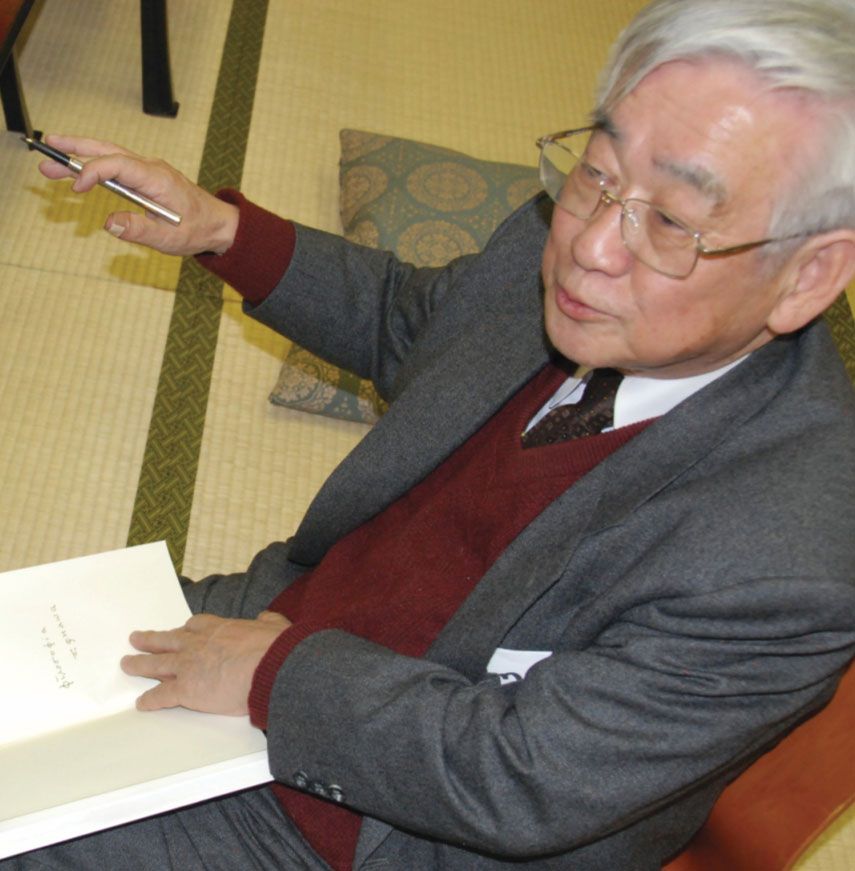Toshihide Maskawa
DOI: 10.1063/PT.3.4887
Toshihide Maskawa died on 23 July 2021 from gingival cancer at age 81 in Kyoto, Japan. He shared the 2008 Nobel Prize in Physics with Makoto Kobayashi “for the discovery of the origin of the broken symmetry which predicts the existence of at least three families of quarks in nature” and with Yoichiro Nambu, who discovered “the mechanism of spontaneous broken symmetry in subatomic physics.”

Toshihide Maskawa

Born in Nagoya, Japan, on 7 February 1940, Maskawa entered Nagoya University in 1958 and stayed there for graduate school. Although he was fascinated by mathematics, he decided to join the particle-theory group of Shoichi Sakata, who proposed the Sakata model, an early precursor to the quark model. Maskawa received his PhD in particle physics from Nagoya in 1967 and spent three years at the university as a postdoc. That period gave him a chance to meet Kobayashi, a brilliant student, who entered Nagoya’s graduate school in 1967. They wrote several papers together at the university.
In 1970 Maskawa moved to Kyoto University as an assistant professor. He was later joined by Kobayashi, who became an assistant professor in April 1972. Early that May, Kobayashi and Maskawa, or KM, started their collaboration on possible origins of CP violation in renormalizable field theories of weak interactions proposed by Sheldon Glashow, Abdus Salam, and Steven Weinberg. The two completed their work by the summer. They showed it is possible to incorporate CP violation if there are six types of quarks. Their paper, published in Progress of Theoretical Physics in February 1973, drew little attention until 1976 because only three types of quarks had been discovered at the time of publication.
Times changed after the discovery of the fourth quark in 1974 and the fifth lepton in 1975. Many people started to speculate about the possibility of six quarks. In 1975 Hirotaka Sugawara and Sandip Pakvasa worked on CP violation using the KM paper as a basis. They showed that the KM proposal was indeed a viable description of the known CP violation with a reasonable choice of the 3 × 3 unitary matrix known now as the CKM matrix (the C is for Nicola Cabibbo). The KM paper came to world attention after the Pakvasa and Sugawara paper was published in 1976 in Physical Review D. In 2001 the BaBar experiment at SLAC and the Belle collaboration at the KEK research institute both showed that the measured CP violation is in remarkable agreement with the KM theory.
The KM theory was a beautiful Nagoya flower that bloomed in Kyoto. I asked Kobayashi why they came up with six quarks when only three quarks were known. His answer was simple: “There were four quarks in Nagoya.” Inspired by the symmetry between the then-known leptons (electron, muon, and neutrino) and fundamental baryons (proton, neutron, and lambda), the Sakata particle-theory group at Nagoya speculated that three fundamental constituents of hadrons are composite particles of three leptons and “B matter” that carry the baryon number. When two kinds of neutrinos were found in 1962, the Sakata group extended the Nagoya model to include four leptons and four constituents of hadrons. In 1971 Kiyoshi Niu and colleagues discovered a new type of event in an emulsion chamber experiment, and Shuzo Ogawa suggested it was evidence of the fourth quark.
Maskawa moved to the University of Tokyo as an associate professor in 1976. Four years later he went back to Kyoto University as a professor at the Yukawa Institute for Theoretical Physics, where he served as director from 1997 until his retirement in 2003. He then led a research group at Kyoto Sangyo University until 2019. From 2010 to 2018, he was also a director of the Kobayashi–Maskawa Institute for the Origin of Particles and the Universe at Nagoya University.
Maskawa always admired Nambu. What made him happiest about receiving the Nobel Prize was that he shared it with Nambu. When Maskawa went to Kyoto in 1970, he gave my fellow graduate students and me a series of lectures on the spontaneous breaking of chiral symmetry. The first material he chose was the groundbreaking work by Nambu and Giovanni Jona-Lasinio. Maskawa was, however, dissatisfied with the nonrenormalizability of their model, and he focused on proving Nambu’s idea in renormalizable theories. Maskawa and Hideo Nakajima examined chiral symmetry breaking in a renormalizable abelian gauge theory. Maskawa made significant contributions to various areas of theoretical physics—for example, constrained systems, the Gribov ambiguity, and supersymmetric nonlinear realizations. They were highly mathematical: One of his favorite books was the Encyclopedic Dictionary of Mathematics (1993).
Maskawa delivered his Nobel lecture in Japanese. By speaking in his native tongue rather than in English, he could express precisely what he had in mind. Having experienced the devastation of World War II in his childhood, he became a peace advocate and maintained his antiwar stance throughout his life. During his career, Maskawa’s honest and straightforward remarks in the media made him popular. He is greatly missed by his colleagues, friends, family, and the people of Japan.
More about the Authors
Kiyoshi Higashijima. Osaka, Japan.
